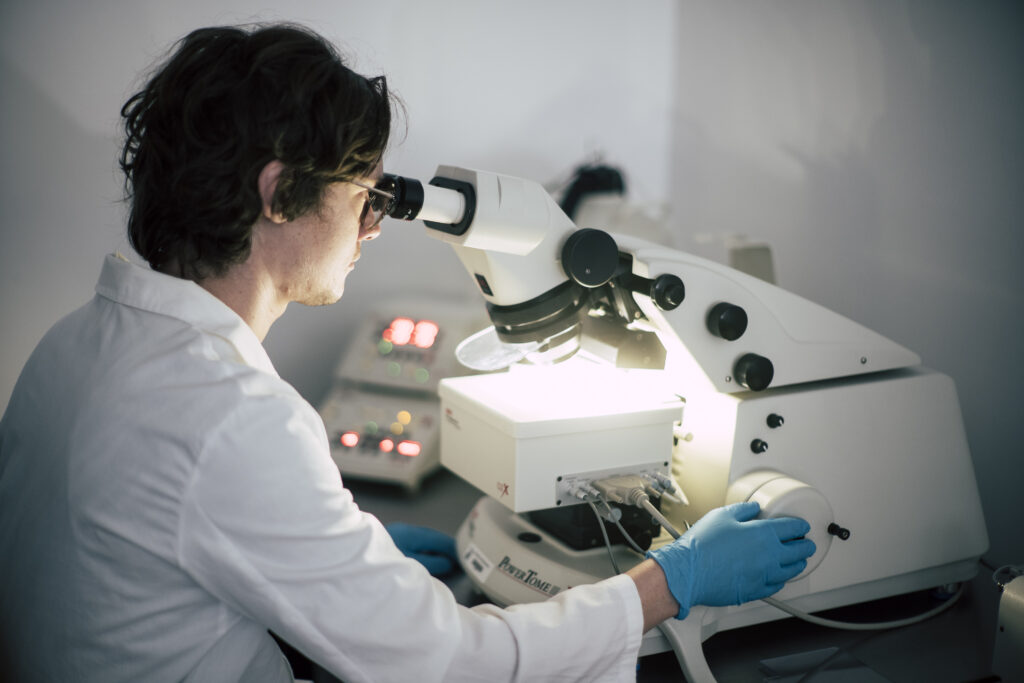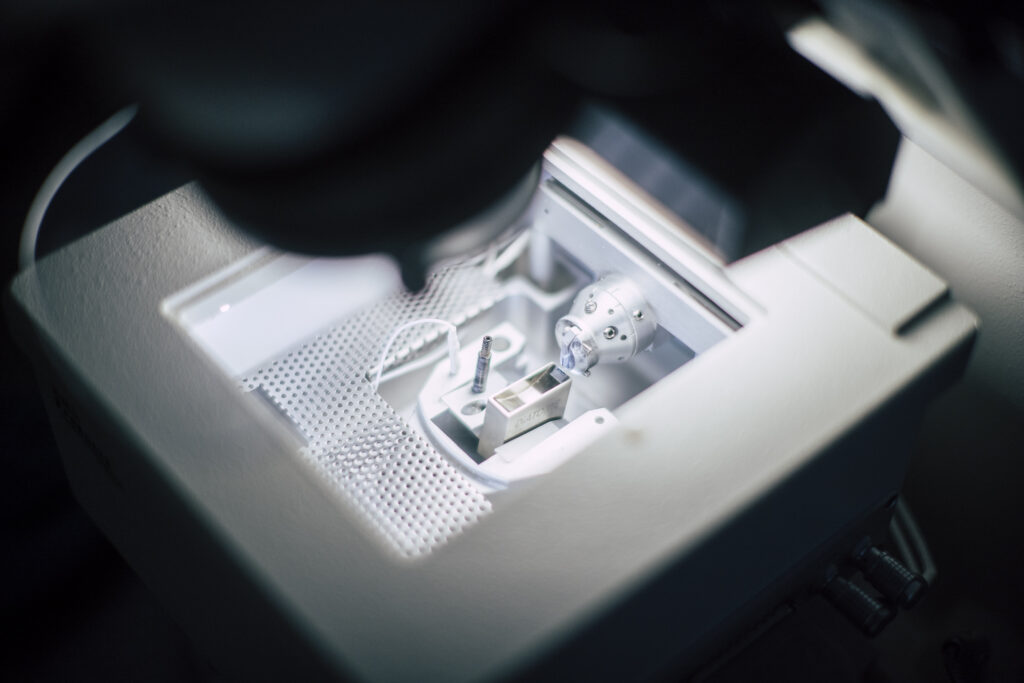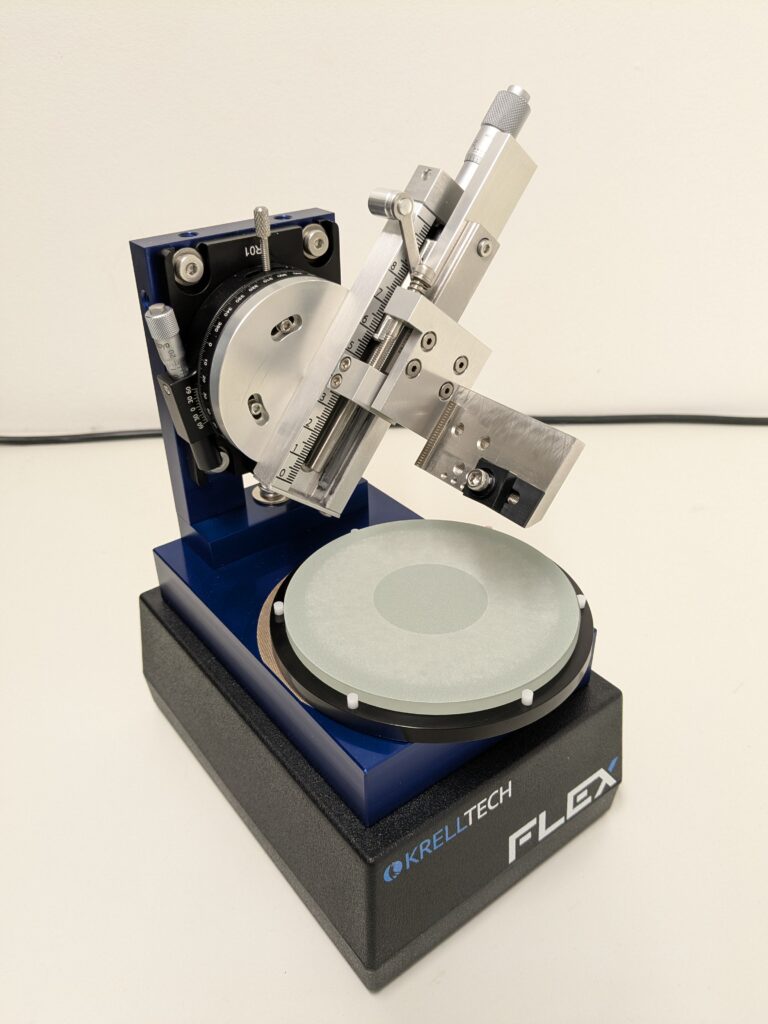Preparation Methods
Preparation Methods
Ultramicrotomy
Device
PowerTome XL / RMC Boeckeler
Expected Result
This process enables high-resolution analysis of layered or composite structures (e.g. layer thickness, aggregation behavior) and the quality of individual layers. Faulty areas and incompatibilities of layers amongst other problems might be identified.
Method
The ultramicrotome slices extremely thin layers (200 nm to 1µm) from samples. This enables a clear cut of the edge, thus a direct view onto the layered structure of a sample is possible. In addition, the cut off slices can be inspected independently. Typically, this method prepares the samples for further investigations using optical microscopy, fluorescence microscopy or scanning electron microscopy.
Case Study
A paper-based print circuit board hosts ink-based conductive lines on its surface as well as on its backside. Vertical interconnection accesses (VIAs) provide electrical connections between the lines. Using ultramicrotomy, the penetration of the ink into the porous structure of the paper as well as the VIA quality is analysed.
Polishing
Devices
FLex PIC & Waveguide Polisher / KrellTech
LaboPol-5 / Struers
Expected Result
A uniformly and precisely polished surface suitable for microscopic analysis and hardness testing. For optical waveguides and PICs, a precisely polished end face optimizes efficient light coupling with minimal signal loss. The system’s flexibility enables high consistency and precision, even with small or irregularly shaped components.
Method
Manual grinding and polishing with variable speed control for solid sample preparation. For photonic integrated circuits (PICs) and optical waveguides, precision polishing is possible with adjustable angle control and universal holders for accommodating various component sizes.
Case Study
An optical component manufacturer requires optimal surface quality for a waveguide to ensure maximum light transmission. Using waveguide polishing, the waveguide’s end face is polished to a precise smoothness thus reducing light scattering and enhancing coupling efficiency.
Ultramicrotome - PowerTome XL / RMC Boeckeler


Specifications
- Sample dimensions: up to 5×5 mm²
- Solid soft materials
- Controlled thickness: 200 nm – 1 µm
- Ultramicrotome with knife block
- Specimen holder with an advancement mechanism
- Samples physically hardened by cooling with liquid nitrogen for better cutting results
Waveguide polishing FLex PIC & Waveguide Polisher / KrellTech

Specifications
- Sample size range:
- Width: 5-25 mm
- Thickness: 0.5-5 mm
- Length: >5 mm
- Polishing angle: 0-45°
- Compatible components: PLCs, optical chips, fiber arrays
- Holders: universal mount with two clamps for various sample sizes
